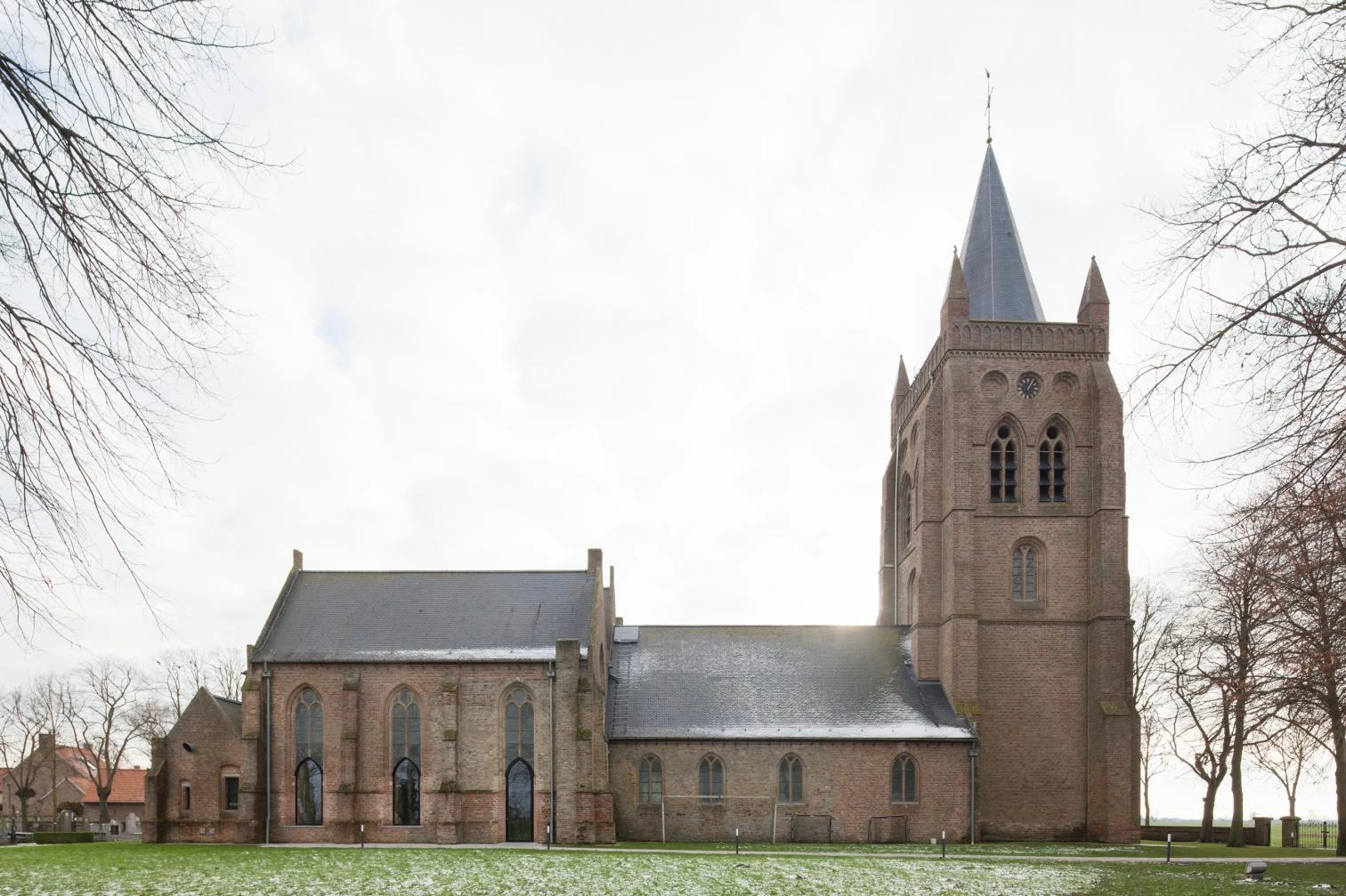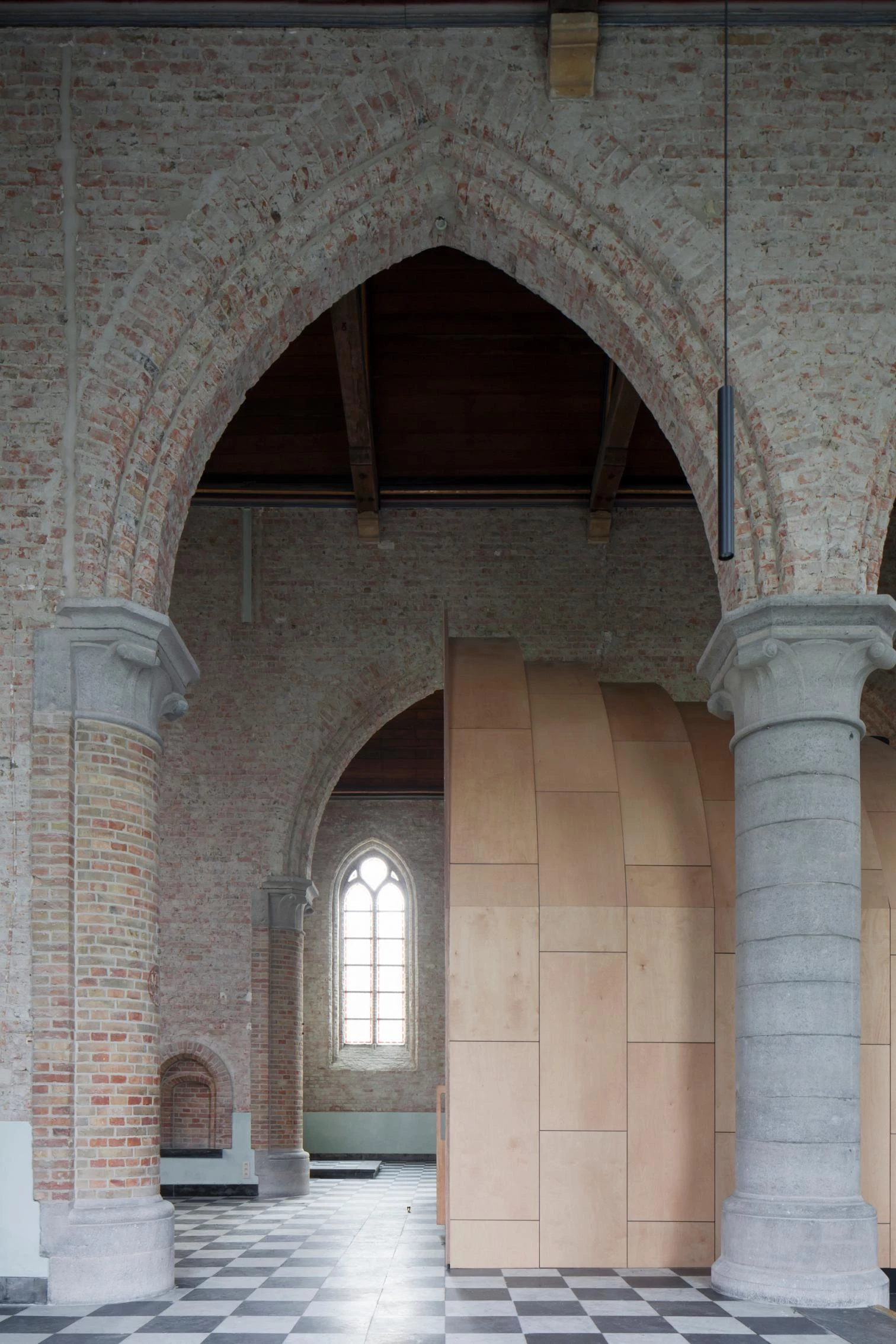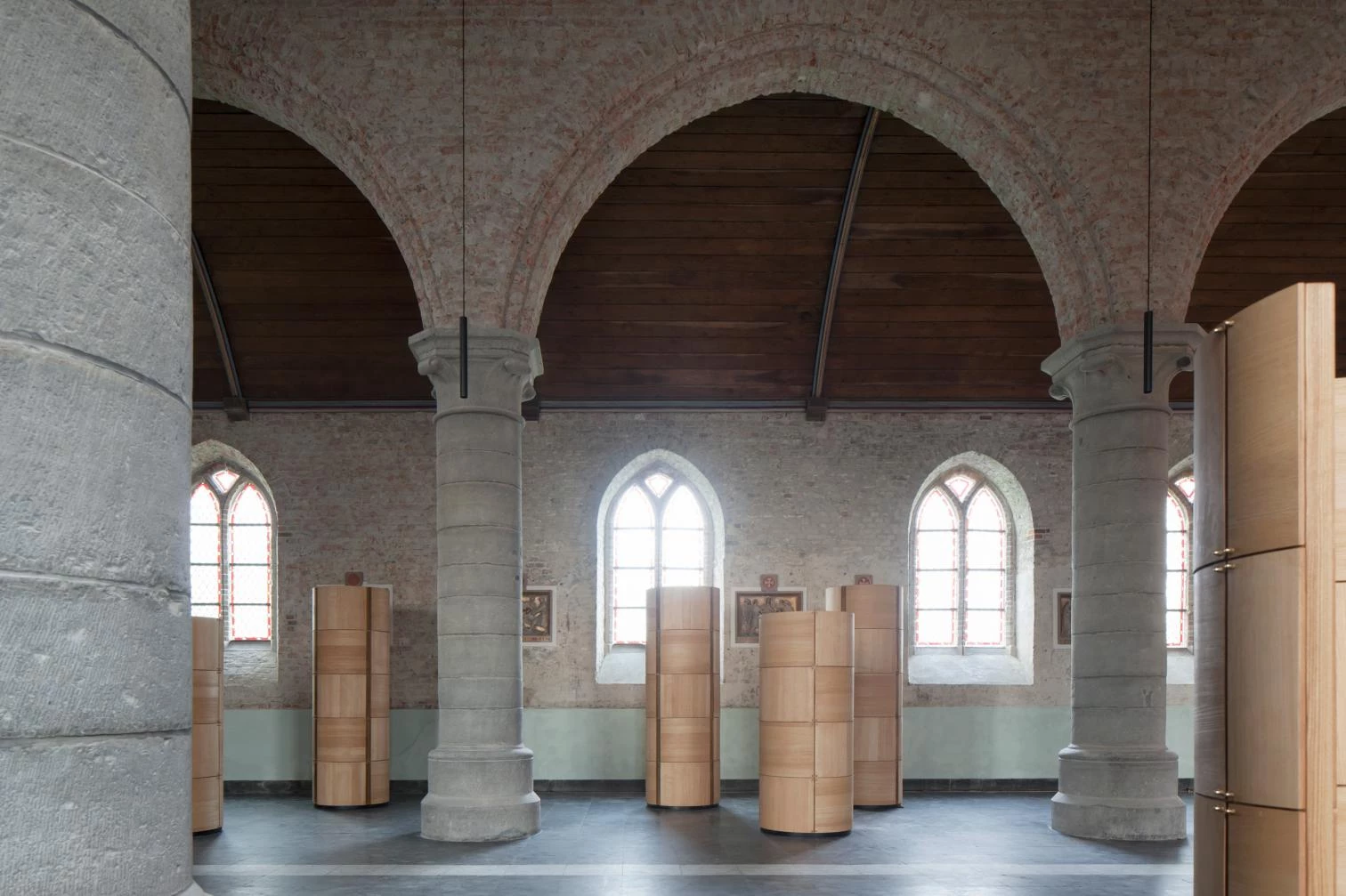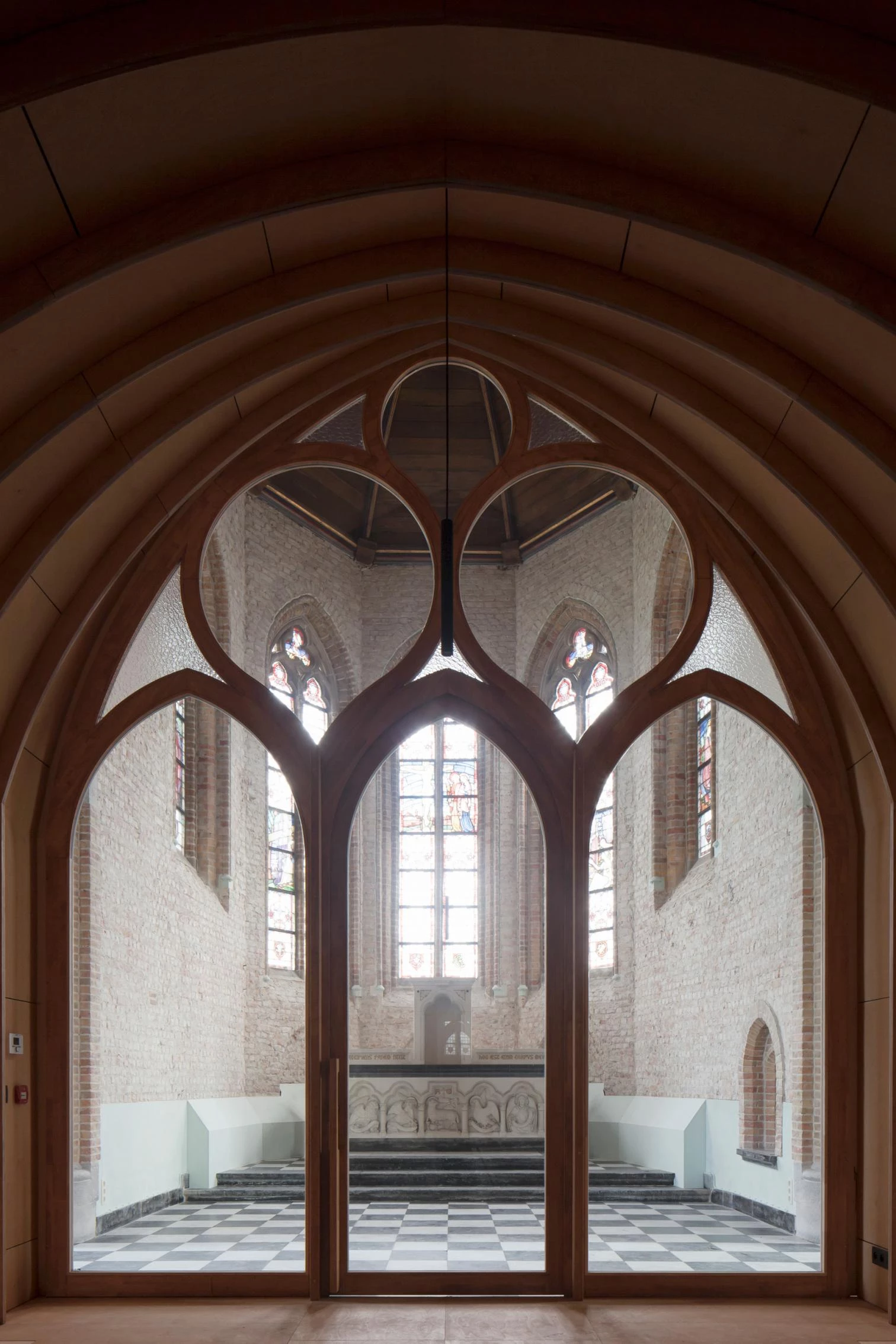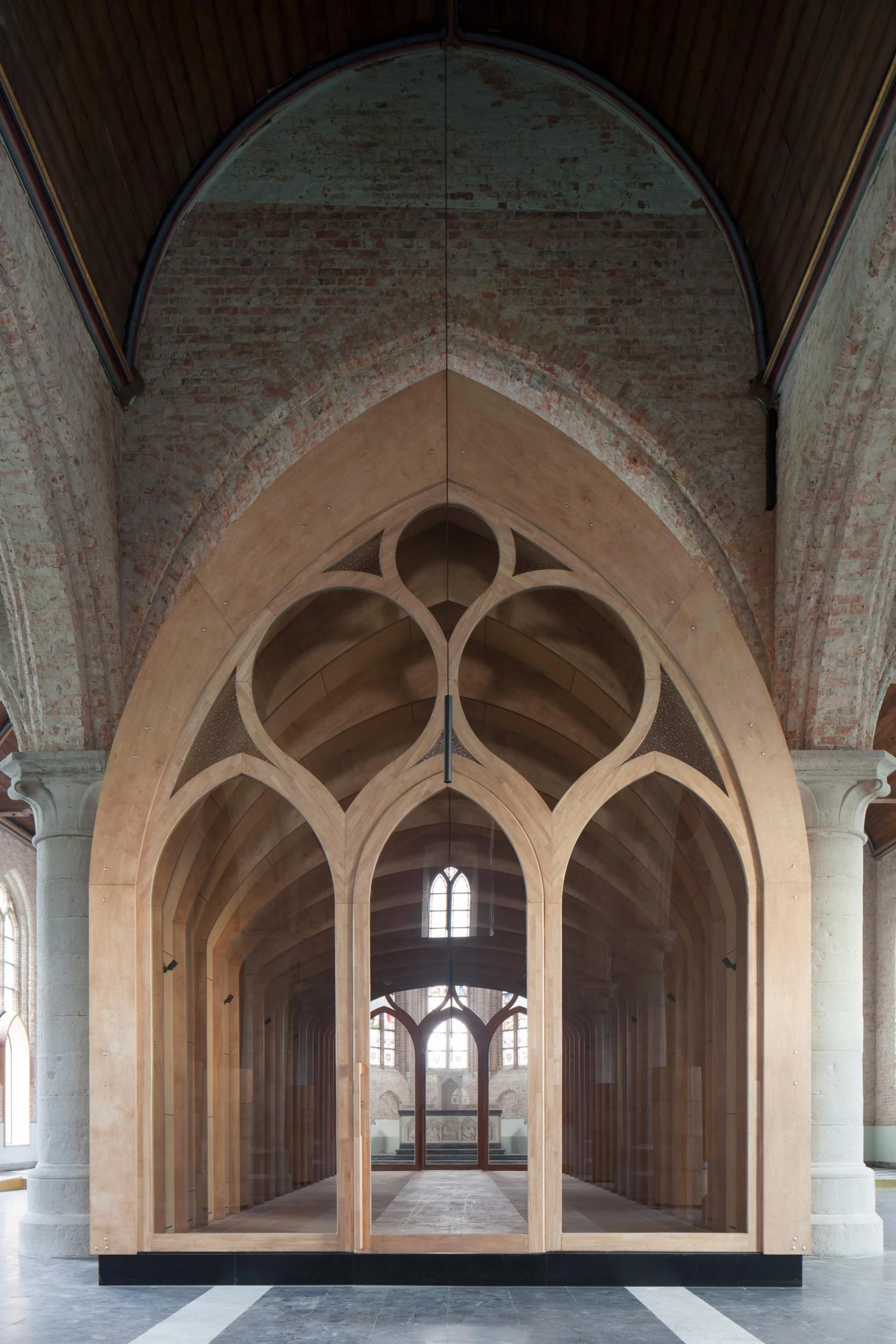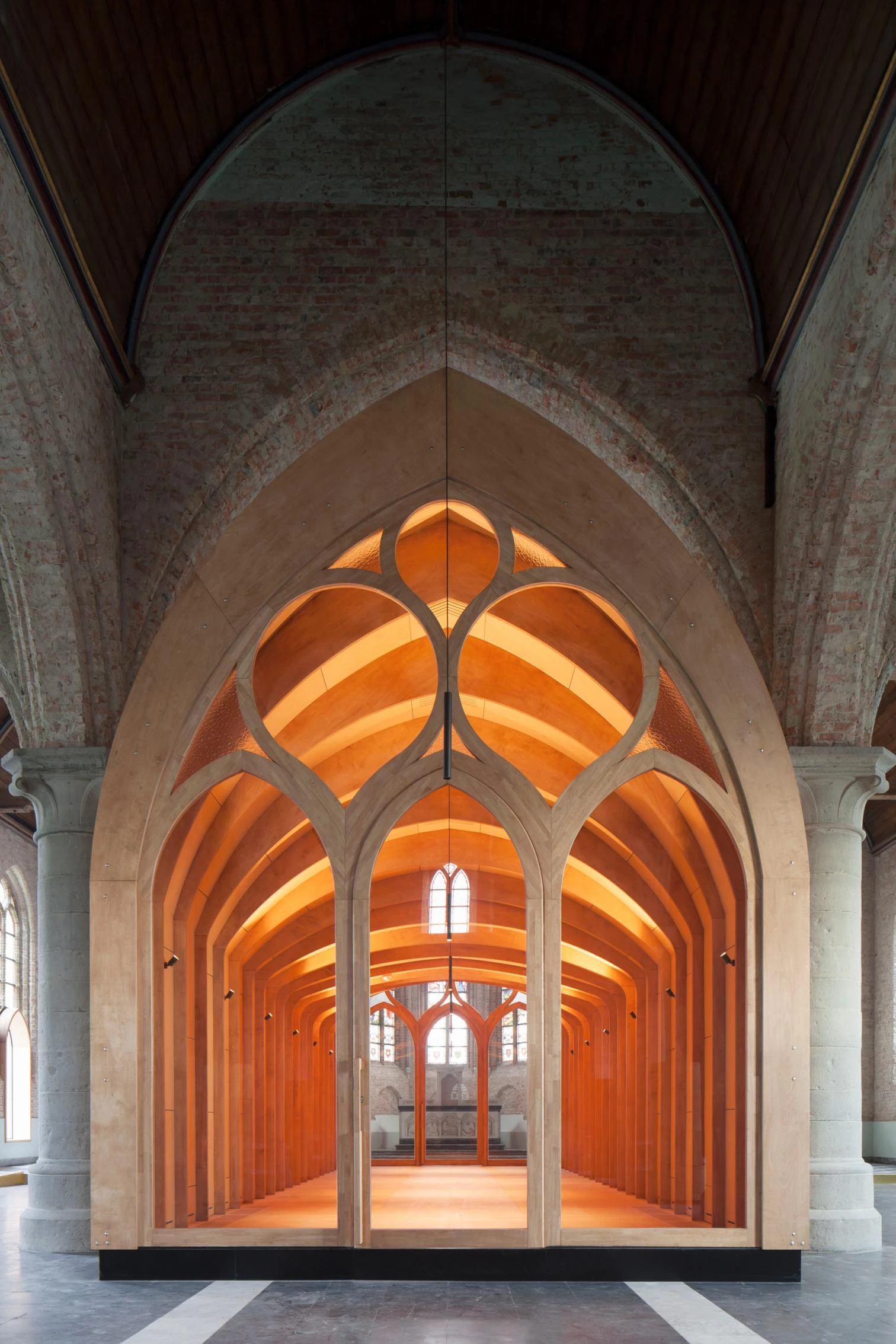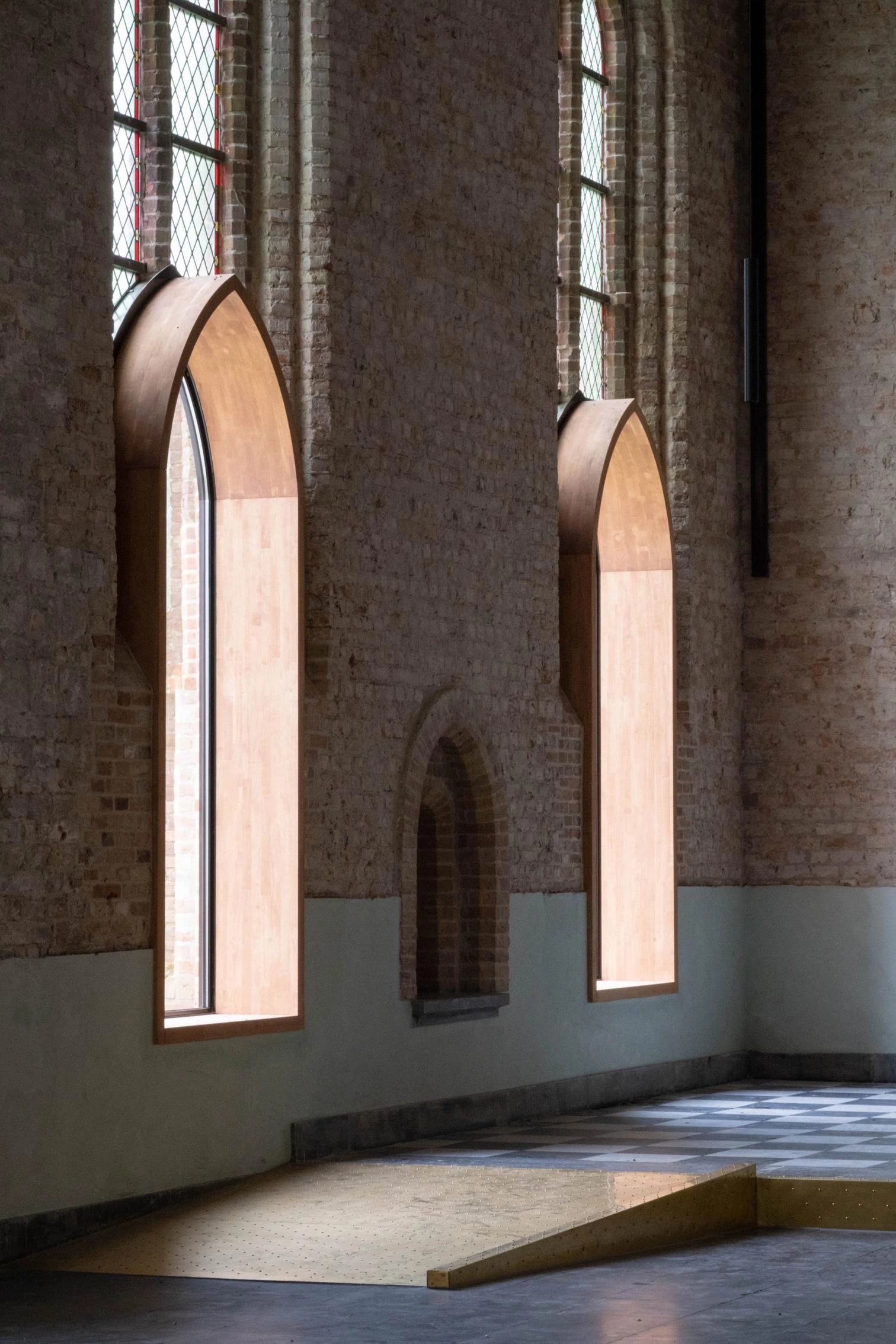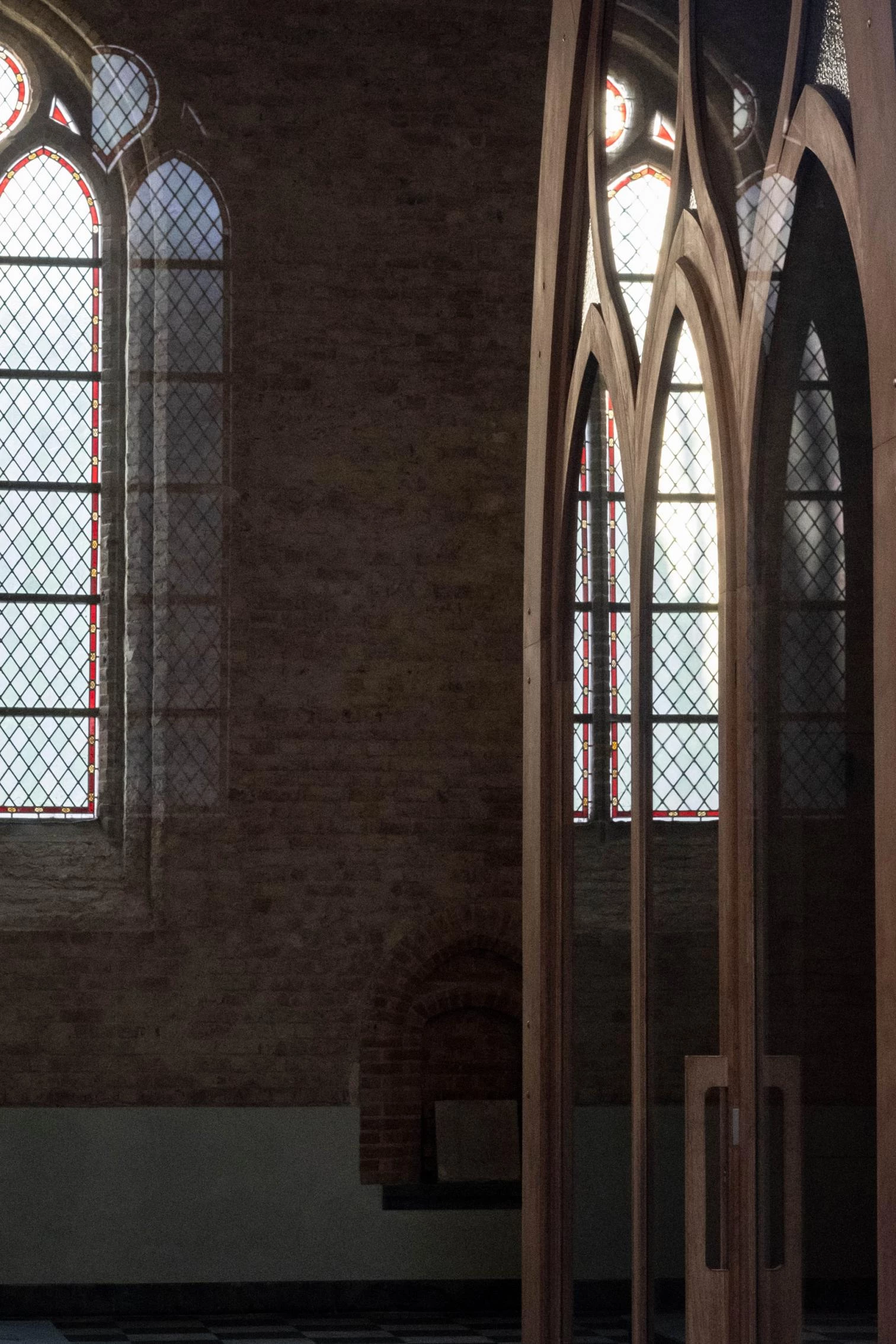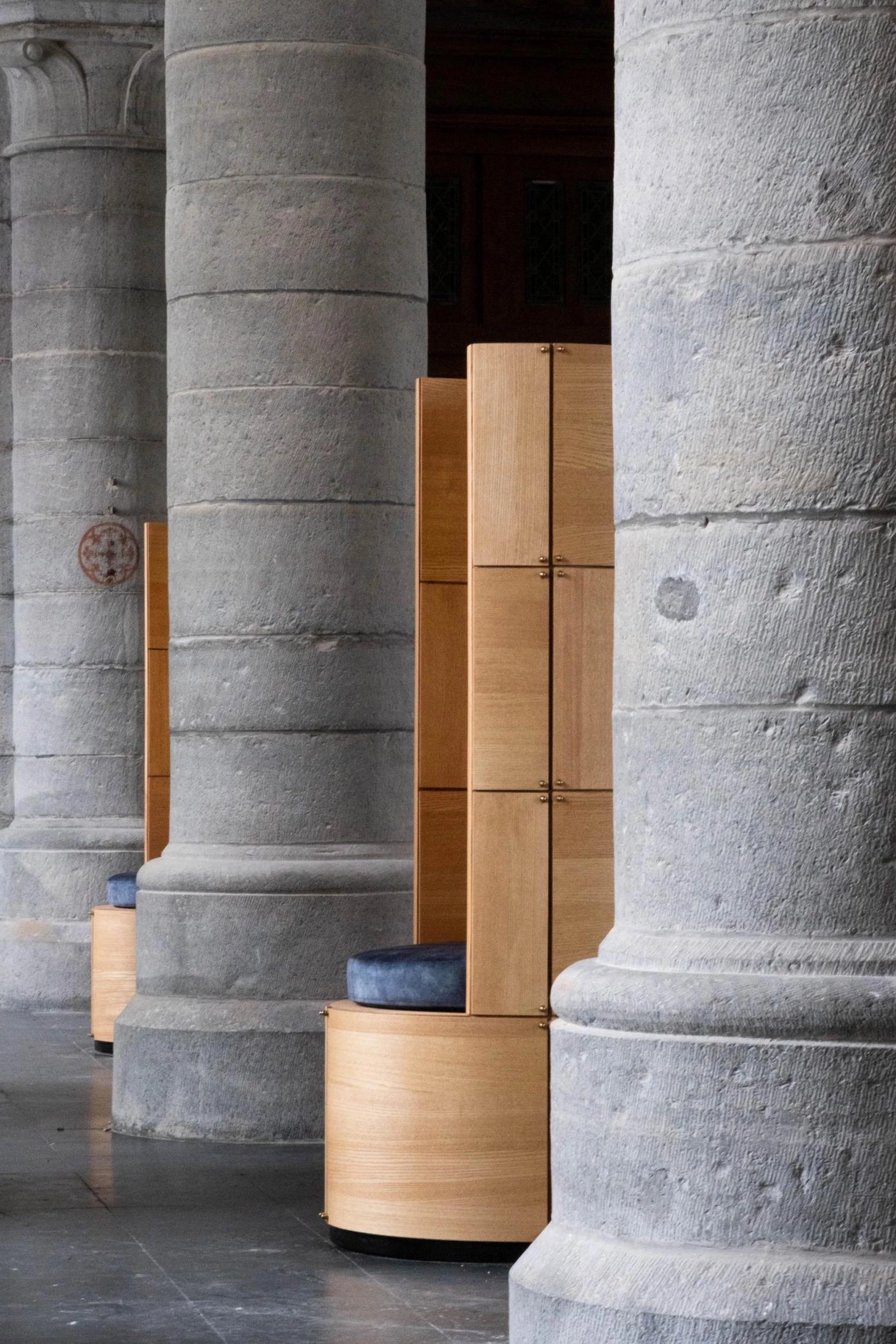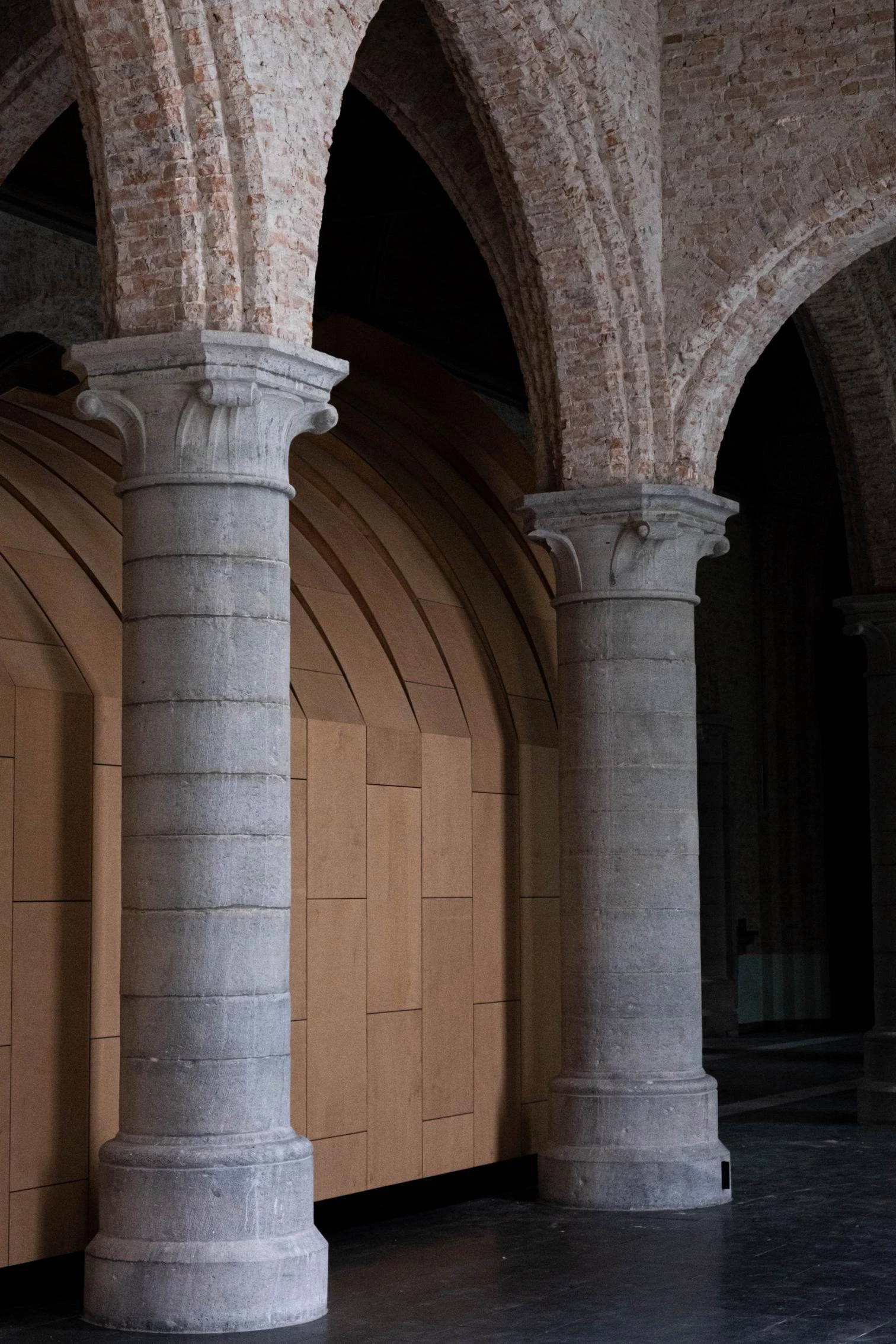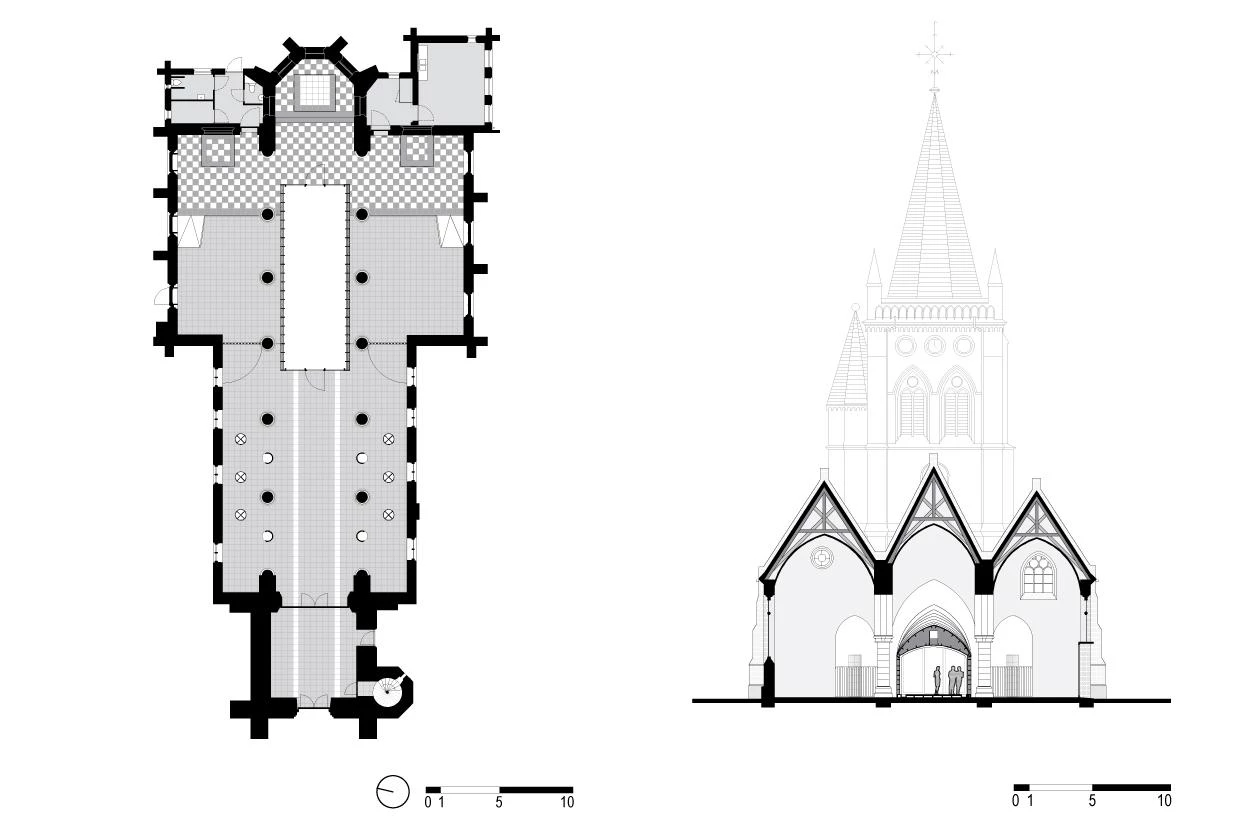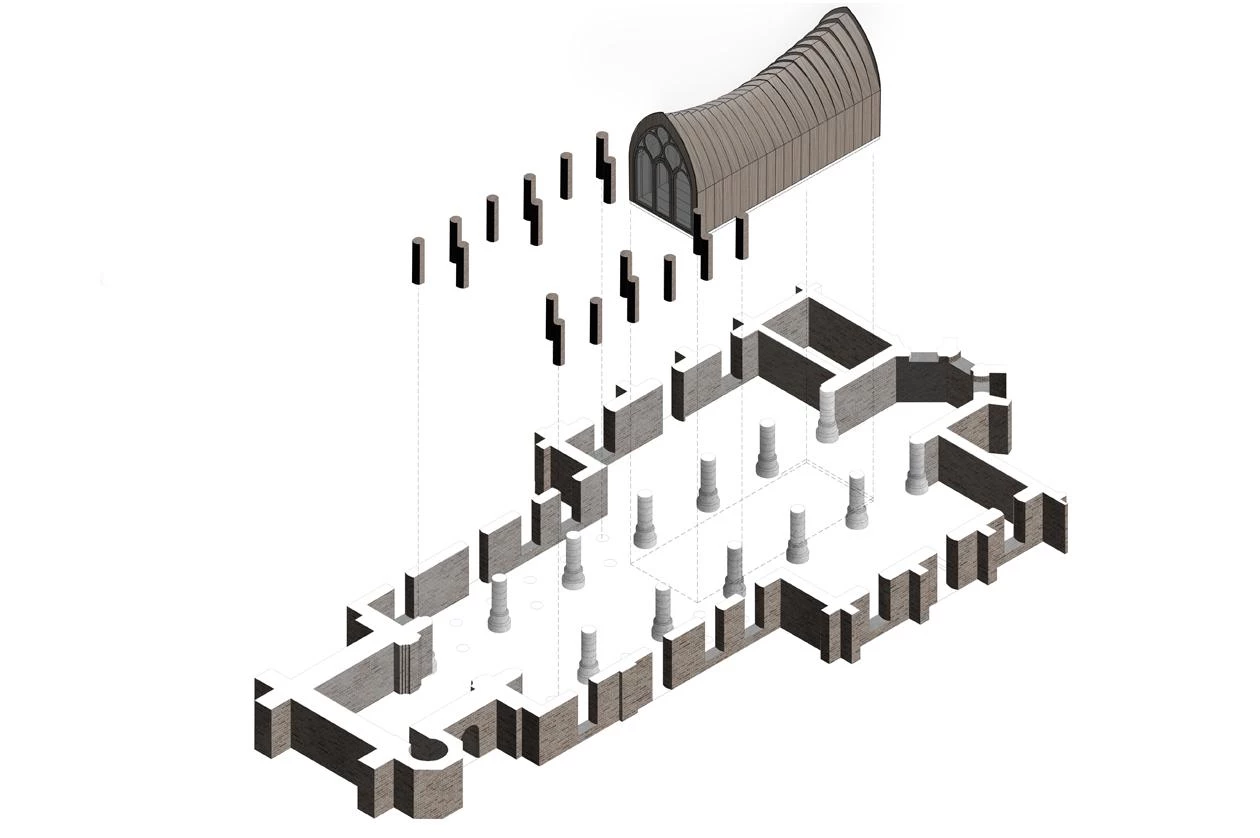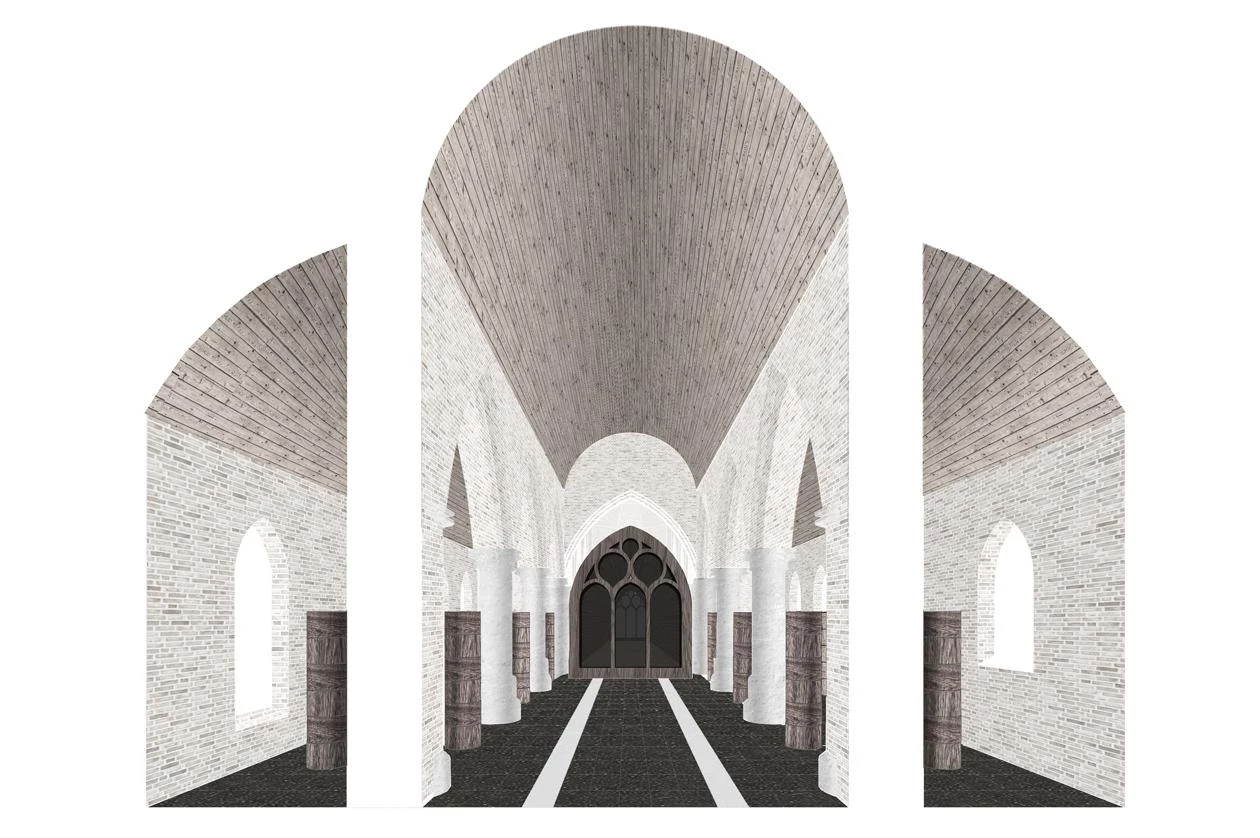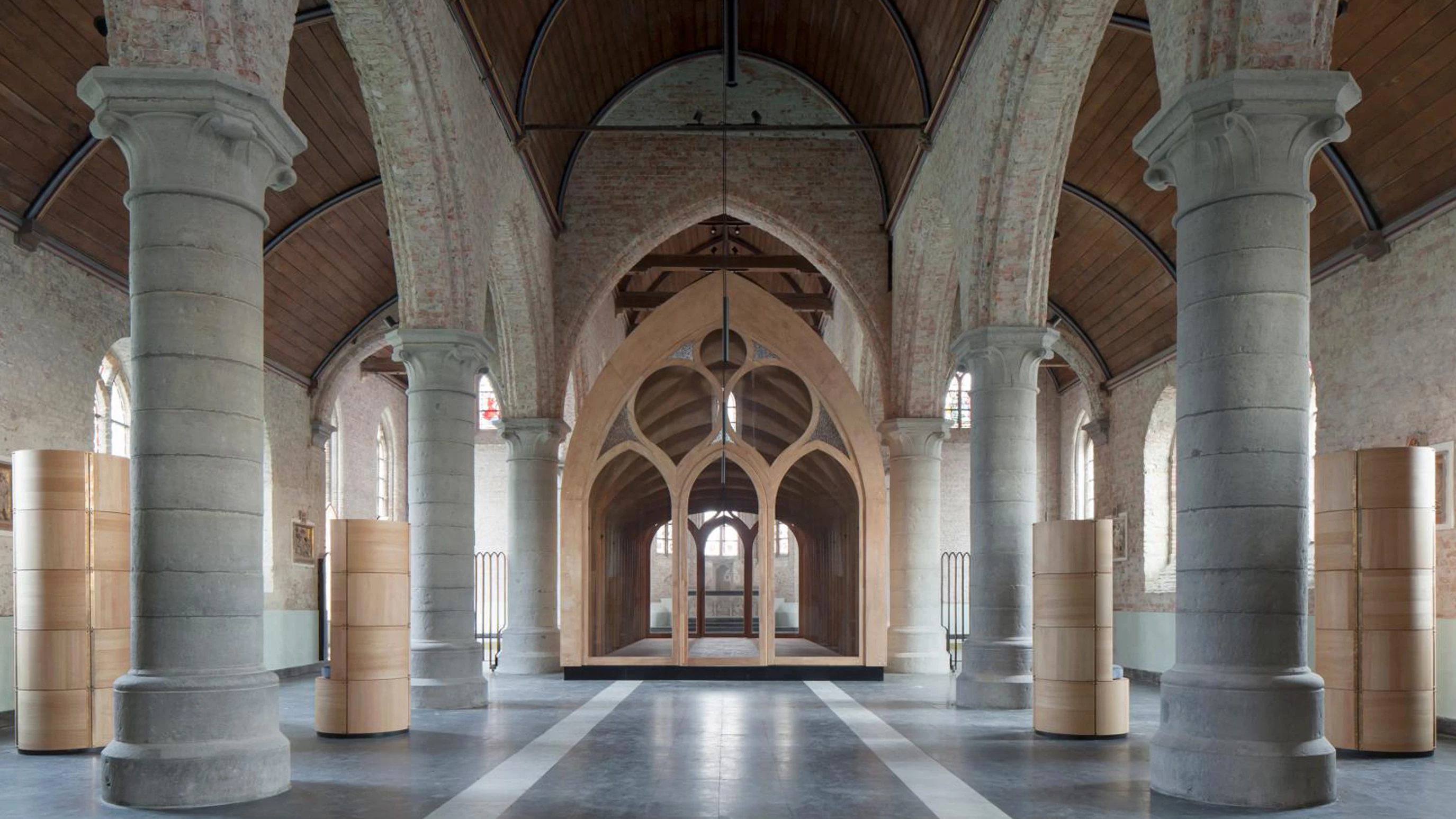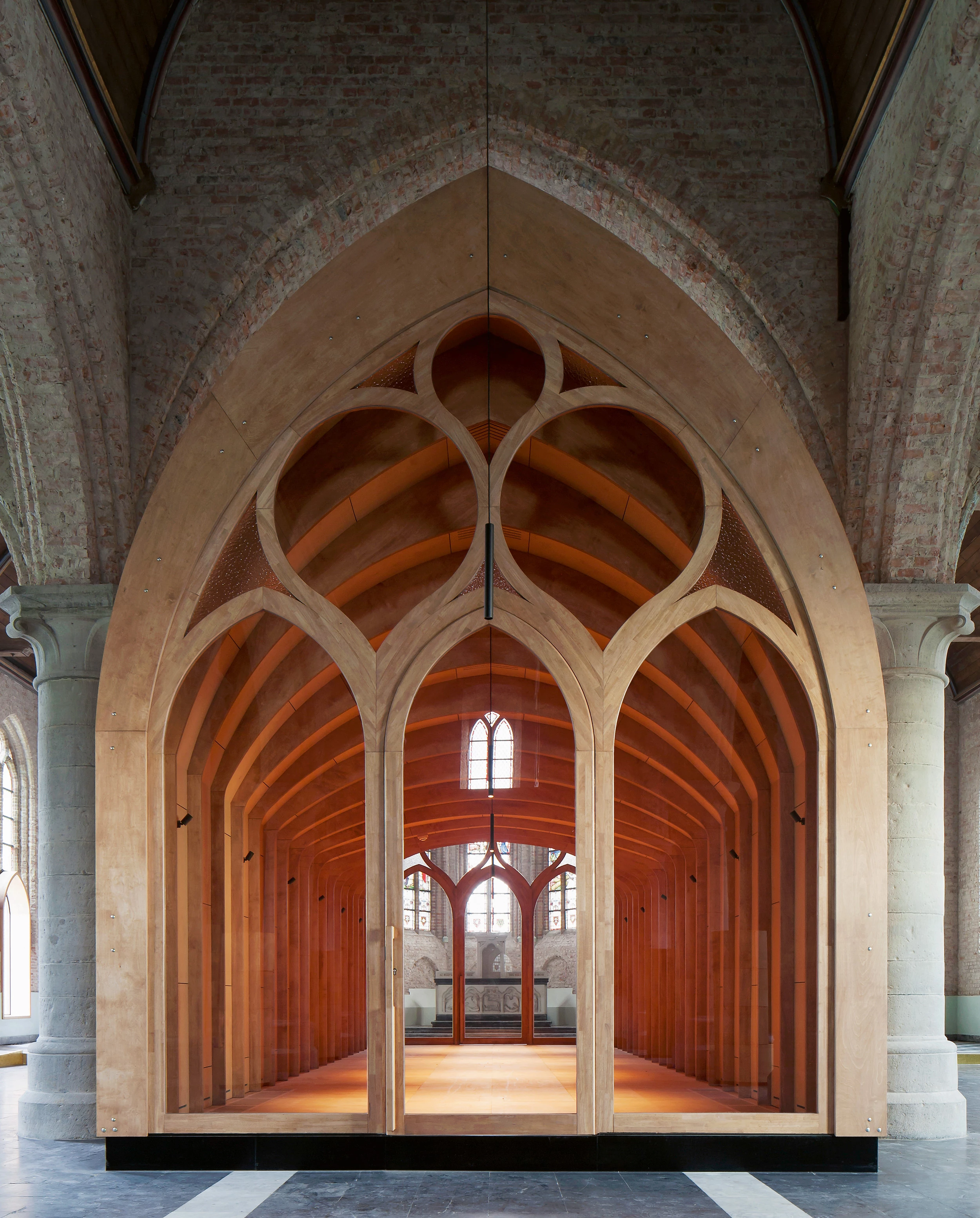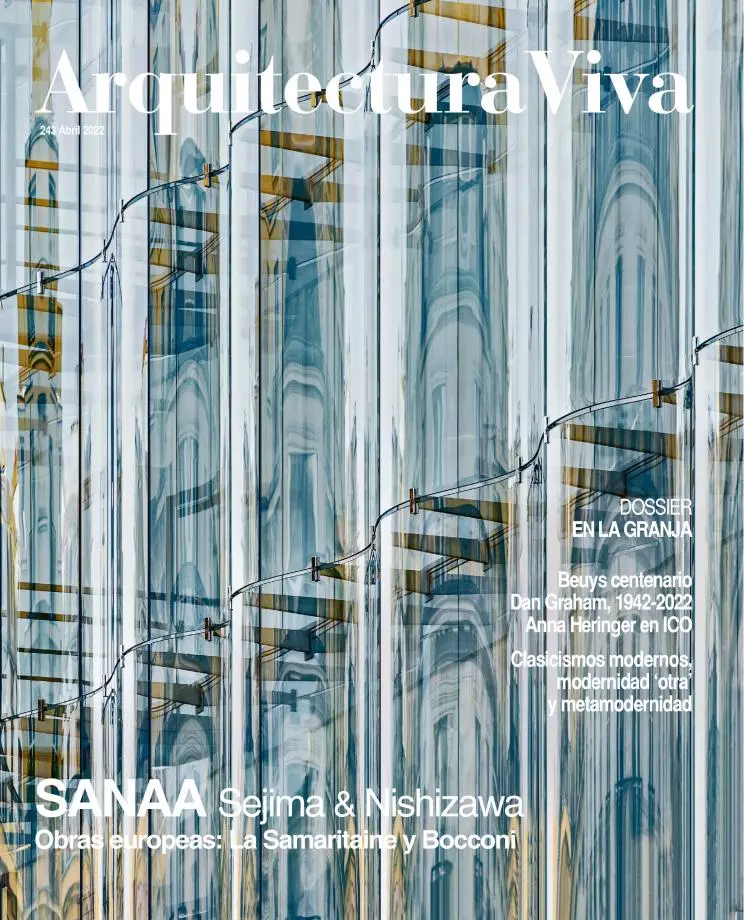House of Silence in Lampernisse
Dhooge & Meganck- Type Religious / Memorial Church Cemetery
- Material Wood
- Date 2022
- City Lampernisse
- Country Belgium
- Photograph Johnny Umans Anabelle Stampaert

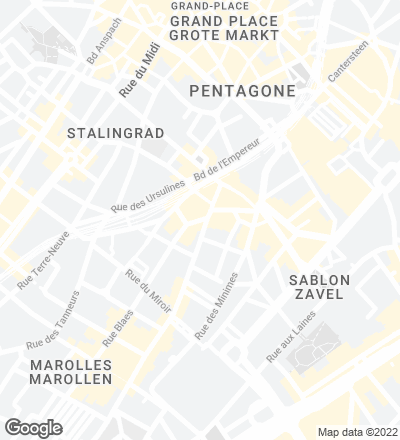
What Prussian howitzers did not manage to do has been achieved by fallow land. If the Great War temporarily deprived Lampernisse of its church, today’s exodus from the countryside has emptied the temple – reconstructed in the 1920s com’era – of faithful. At least living ones, given that the parish of the small Belgian community has started to function as a resting place for the ashes of the departed, for which a series of interventions has been carried out to transform the desacralized Gothic nave into a warmer, more humane space.
Duplicating the rhythm of carved columns, cylindrical pieces contain niches and trace a dis-persed path between lateral arcades, enhanced by the light and by views of the surrounding garden that merited new openings without the blocking effect of mullions. A vaulted timber volume takes up the transept, breaking the liturgical axiality of the former church and crea-ting a ceremonial hall more in accord with contemporary funeral practices: a kind of secular Porziuncula where mourners can gather to grieve together and in private.
